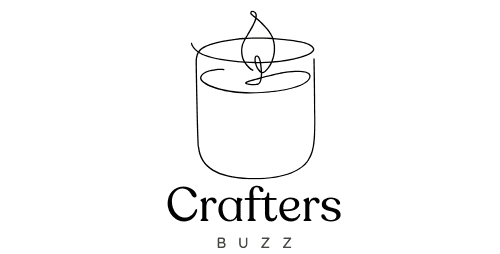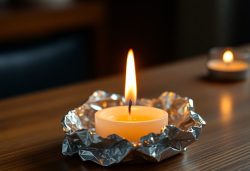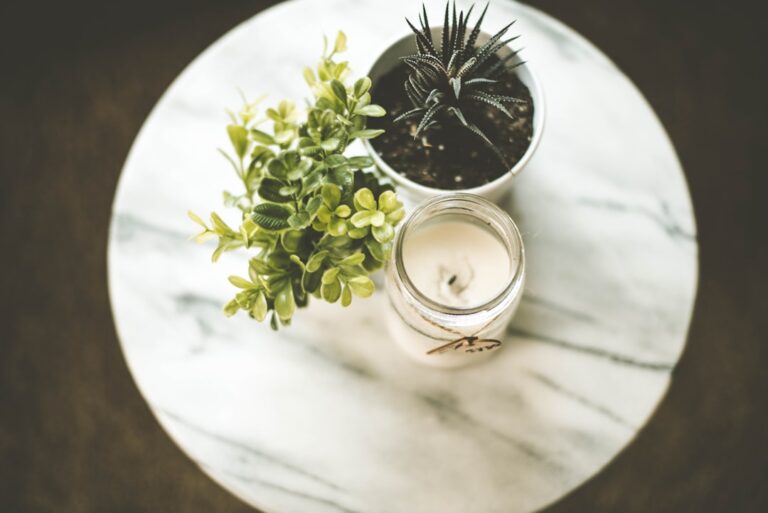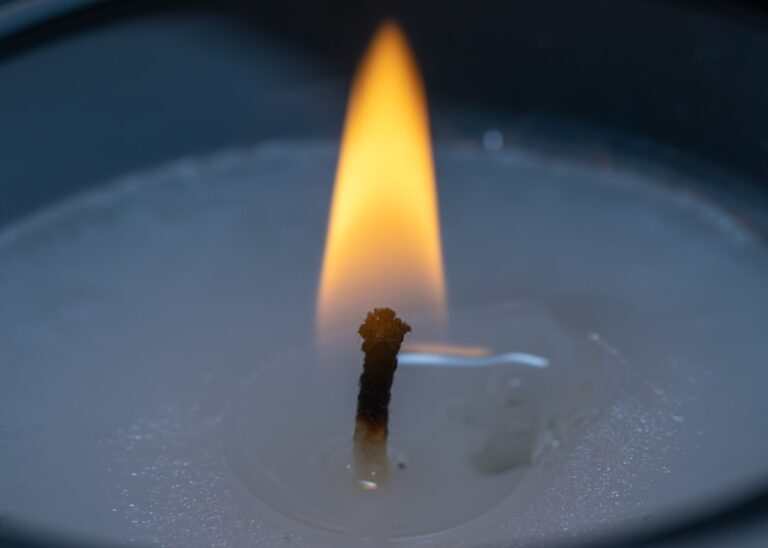How and why to trim candle wicks for better performance.
Trimming candle wicks is a fundamental practice that significantly enhances the overall performance and safety of candles. When a wick is too long, it can lead to an uneven burn, producing excessive soot and smoke. This not only detracts from the aesthetic experience of burning a candle but can also pose health risks due to the inhalation of soot particles.
Moreover, a long wick can create a larger flame, which increases the risk of the candle overheating or even causing a fire hazard. By maintaining an appropriate wick length, candle enthusiasts can ensure a cleaner, more efficient burn that maximizes the candle’s fragrance and longevity. In addition to safety concerns, trimming wicks plays a crucial role in preserving the quality of the candle’s scent throw.
A well-trimmed wick allows for a consistent and controlled flame, which is essential for optimal fragrance diffusion. When the wick is trimmed to the right length, it promotes an even melt pool, allowing the wax to release its aromatic compounds effectively. This results in a more enjoyable sensory experience, as the candle’s scent can fill the room without being overpowered by smoke or soot.
Therefore, regular wick trimming is not merely a maintenance task; it is an essential practice for anyone who wishes to enjoy their candles to the fullest.
How to Properly Trim Candle Wicks
Properly trimming candle wicks involves more than just snipping off the top; it requires attention to detail and an understanding of the ideal wick length for different types of candles. The general rule of thumb is to trim the wick to about one-quarter inch before lighting the candle. This length is optimal for most candles, as it allows for a steady flame that burns cleanly without producing excessive soot.
To achieve this, one can use scissors or specialized wick trimmers designed for this purpose. It is important to ensure that the wick is straight and centered after trimming, as this will help maintain an even burn. When trimming wicks, it is advisable to do so when the candle is completely cool and solidified.
This prevents any potential accidents or injuries that could occur if the wax is still warm. Additionally, trimming should be done regularly, especially if the candle has been burned multiple times. After each use, take a moment to inspect the wick and remove any charred or frayed ends.
This simple act not only enhances safety but also contributes to a more enjoyable burning experience by ensuring that the flame remains at an appropriate size.
Tools Needed for Trimming Candle Wicks
To effectively trim candle wicks, certain tools can make the process easier and more efficient. The most common tool used is a pair of scissors; however, specialized wick trimmers are highly recommended for those who frequently burn candles. Wick trimmers are designed with a curved blade that allows for precise cutting at the desired length while minimizing wax spillage.
These tools often come with a catchment area to collect trimmed wick remnants, making cleanup simple and mess-free. In addition to scissors or wick trimmers, having a small brush or cloth on hand can be beneficial for cleaning up any debris that may accumulate around the wick area. A small vacuum or handheld dustpan can also be useful for larger messes.
For those who enjoy crafting their own candles, a wick holder can be an invaluable tool. This device helps keep the wick centered while pouring wax, ensuring that it remains straight and properly positioned as it cools. By utilizing these tools, candle enthusiasts can maintain their candles effectively and enhance their overall burning experience.
The Impact of Wick Length on Candle Performance
The length of a candle wick has a profound impact on its performance, influencing factors such as burn time, scent throw, and overall safety. A wick that is too short may struggle to produce a sufficient flame, resulting in poor wax melting and limited fragrance release. Conversely, an excessively long wick can lead to an oversized flame that consumes wax too quickly and generates soot.
This imbalance not only affects the candle’s efficiency but can also create an unpleasant burning experience characterized by flickering flames and uneven melting. Moreover, different types of waxes and fragrances may require specific wick lengths for optimal performance. For instance, soy wax candles often benefit from slightly longer wicks due to their lower melting point compared to paraffin wax.
Understanding these nuances allows candle makers and users alike to tailor their wick trimming practices according to the specific characteristics of their candles. By paying attention to wick length and making adjustments as needed, one can significantly enhance both the aesthetic and functional qualities of their candles.
Safety Precautions for Trimming Candle Wicks
When trimming candle wicks, safety should always be a top priority. First and foremost, it is essential to ensure that the candle is completely cool before attempting any trimming. This prevents accidental burns or injuries from hot wax or flames.
Additionally, using appropriate tools designed for trimming wicks minimizes the risk of accidents; sharp scissors or specialized trimmers should be handled with care to avoid cuts or injuries. Another important safety consideration is maintaining a clean workspace free from flammable materials. Before trimming, it is wise to clear away any clutter that could pose a fire hazard should sparks occur during the trimming process.
Furthermore, it is advisable to keep candles away from drafts or open windows while they are burning, as this can cause flickering flames that may lead to uneven burning or even accidents. By adhering to these safety precautions, candle enthusiasts can enjoy their hobby with peace of mind.
How Often Should You Trim Candle Wicks
The frequency with which one should trim candle wicks largely depends on how often the candles are burned and their specific characteristics. As a general guideline, it is recommended to trim wicks before each use to ensure optimal performance every time you light your candle. This practice helps maintain an ideal wick length and prevents issues such as soot buildup or uneven burning from developing over time.
For candles that are used frequently or have been burned for extended periods, inspecting and trimming the wick after each burn becomes even more critical. If you notice that the flame appears larger than usual or if soot begins to accumulate on the glass or surrounding surfaces, it may be time for a trim. Regular maintenance not only enhances safety but also prolongs the life of your candles by ensuring they burn evenly and efficiently.
Troubleshooting Common Candle Wick Issues
Candle enthusiasts may encounter various issues related to wick performance that can detract from their enjoyment of burning candles. One common problem is tunneling, where the wax melts unevenly around the wick, creating a deep well in the center while leaving unburned wax along the edges. This issue often arises from using a wick that is too short or from burning the candle for insufficient time during each use.
To remedy tunneling, one can try trimming the wick before lighting it again and allowing it to burn long enough for the entire surface layer of wax to melt evenly. Another frequent issue is excessive soot production during burning, which can be attributed to an overly long wick or poor-quality wax blends. If you notice black soot accumulating on the container or surrounding surfaces, it’s essential to trim the wick down to about one-quarter inch before relighting it.
Additionally, consider switching to higher-quality candles made from natural waxes like soy or beeswax, which tend to produce less soot compared to paraffin-based candles.
Benefits of Regularly Trimming Candle Wicks
Regularly trimming candle wicks offers numerous benefits that enhance both safety and enjoyment during use. One of the most significant advantages is improved burn quality; well-trimmed wicks promote an even flame size that leads to consistent melting of wax and optimal fragrance release. This results in a more pleasant sensory experience as the candle fills your space with its intended aroma without being overshadowed by smoke or soot.
Moreover, maintaining proper wick length contributes to longer burn times and greater efficiency in wax consumption. By preventing excessive soot buildup and ensuring an even melt pool, trimmed wicks help maximize the lifespan of your candles while providing better value for your investment. Additionally, regular maintenance fosters a safer environment by reducing fire hazards associated with oversized flames or flickering wicks.
Ultimately, incorporating this simple practice into your candle care routine can significantly enhance your overall experience while enjoying these delightful sources of light and fragrance.
If you’re interested in making your own candles, you may also want to check out this article on candle molds and their shape-creating uses. Understanding the different types of molds available can help you create unique and beautiful candles for any occasion.
FAQs
What is the purpose of trimming candle wicks?
Trimming candle wicks helps to maintain a clean and even burn, prevents excessive smoking and soot, and prolongs the life of the candle.
How often should candle wicks be trimmed?
Candle wicks should be trimmed to about 1/4 inch before each use to ensure optimal performance.
What tools can be used to trim candle wicks?
Candle wick trimmers or scissors specifically designed for trimming wicks are recommended for the task.
What are the benefits of trimming candle wicks?
Trimming candle wicks can help to reduce soot and smoke, minimize mushrooming at the tip of the wick, and promote a longer, cleaner burn.
Can trimming candle wicks improve the scent throw of the candle?
Yes, trimming the wick can help to improve the scent throw of the candle by allowing the fragrance to disperse more evenly as the candle burns.
















